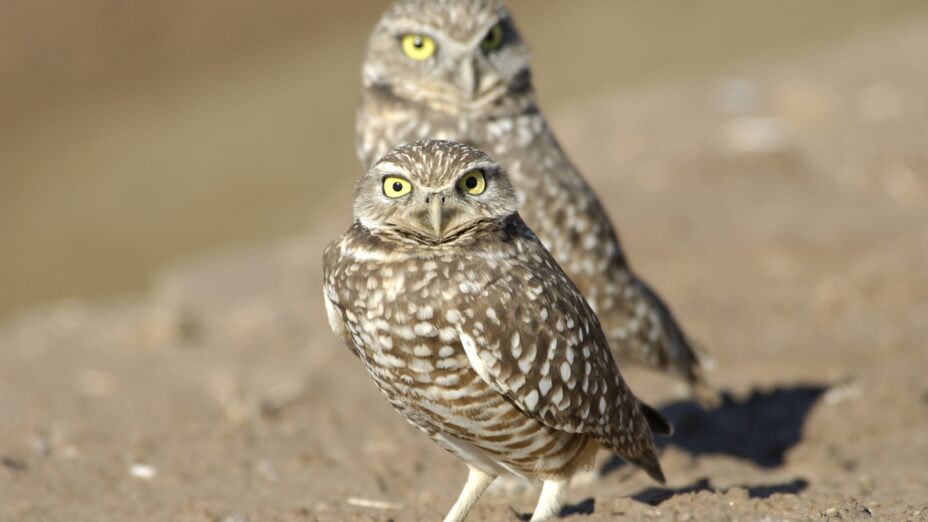
The goofiest darlings of California’s native grasslands, western burrowing owls, are under threat. Environmental groups across the state are uniting to request heightened protection.
Petition to List Burrowing Owls As Endangered or Threatened
On March 5, 2024, conservation groups led by the Center for Biological Diversity launched a petition.
The petition would change the conservation status of the western burrowing owl (Athene cunicularia hypugaea) to “endangered” or “threatened” under the California Endangered Species Act. Currently the owl is considered a “species of special concern” in California.
According to the petition, burrowing owls have been eliminated as a breeding species from almost all of the California coast. And they are rapidly nearing localized extinction in the Bay Area, where fewer than 25 breeding pairs remain.
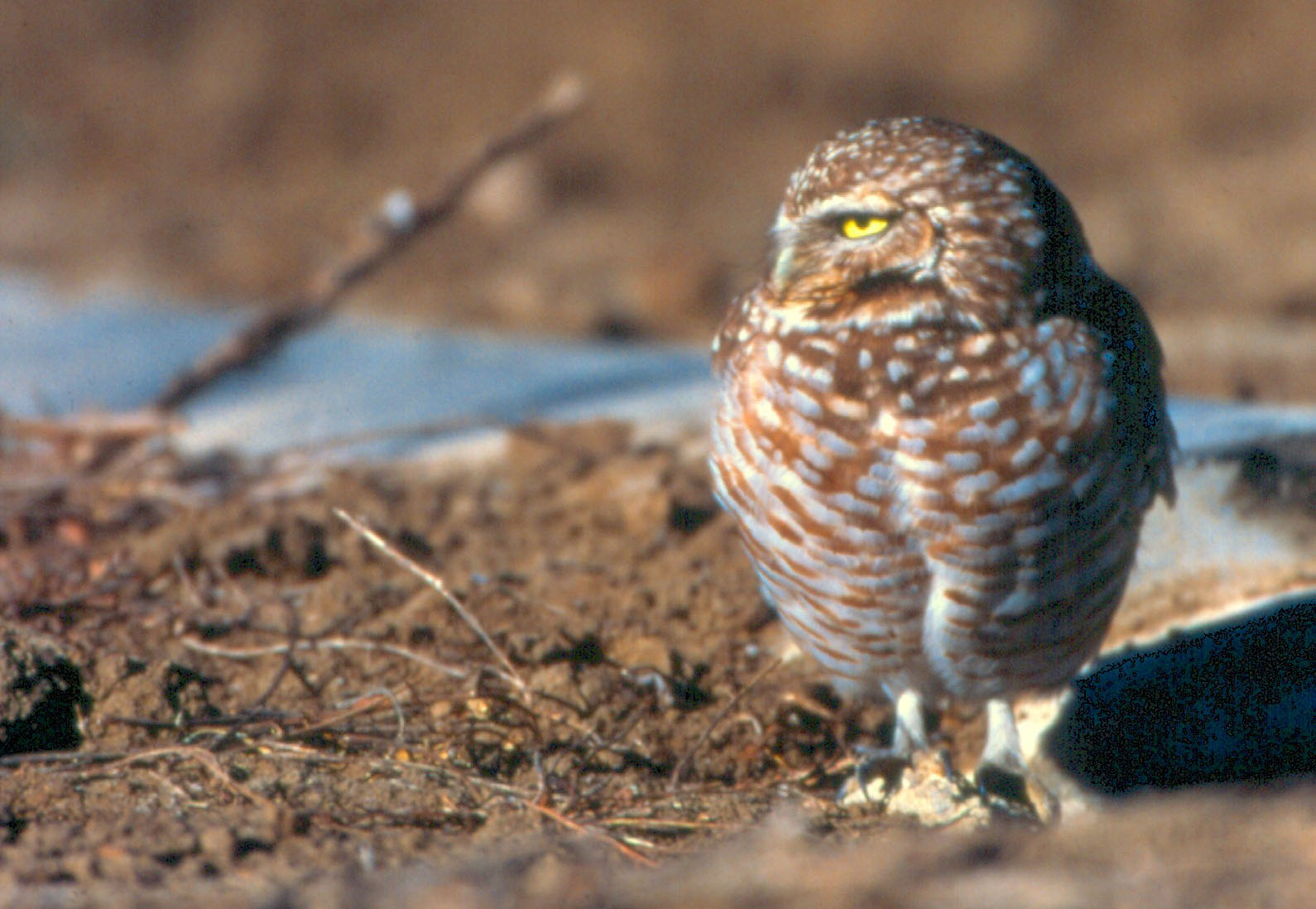
Western burrowing owl. Photo by Scott Hein
Though there are some holdouts in some parts of California, particularly in the Imperial Valley, it’s clear that certain populations are in trouble.
Although western burrowing owls are already federally protected under the Migratory Bird Treaty Act, new protections would do much more to protect the species.
The petition specifically requests the following.
- List as endangered: San Francisco Bay Area, central-western California, and southwestern California populations, and
- List as threatened: Central Valley and southern desert range populations
OR
- List the burrowing owl throughout its entire range in California as threatened.
What Makes These Birds So Special
Western burrowing owls are highly adapted to, and reliant on, grassland ecosystems. Unlike most owls or other birds in general, they live in burrows in the ground, often using abandoned burrows of animals like prairie dogs and ground squirrels.
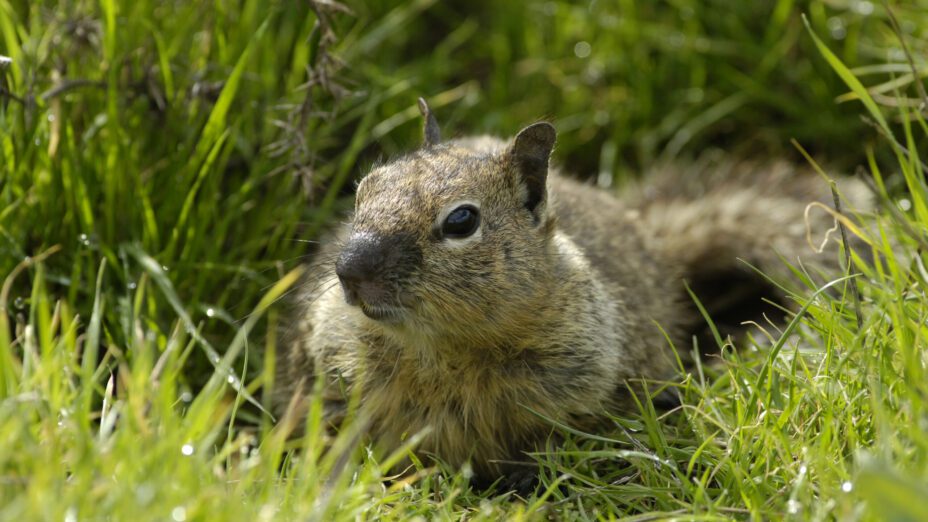
California ground squirrels create habitat for many species, including burrowing owls. Photo by Scott Hein
Burrowing owls are often out in the daytime, making them more observable than many other owls. Social birds by nature, burrowing owls often live in scattered colonies.
Ecologically, burrowing owls help control insect and rodent populations, which can benefit agriculture and maintain ecological balance. Their population declines also signal broader environmental issues.
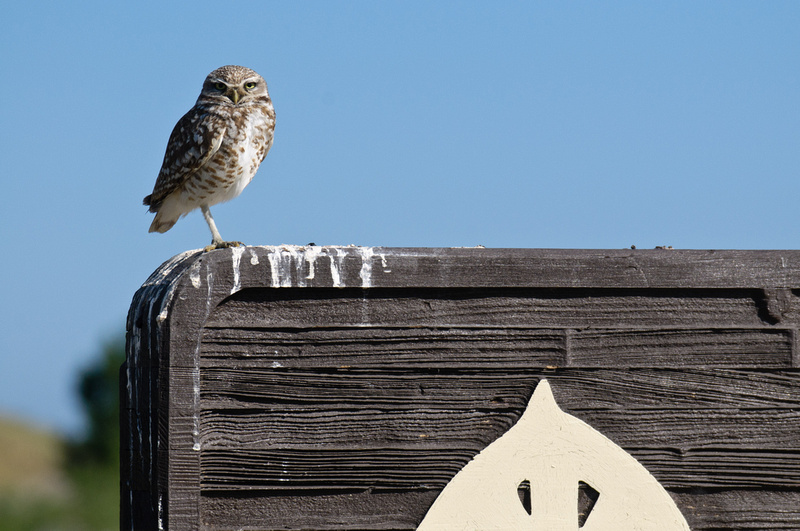
A western burrowing owl on the Stewartville Trail. Photo by Scott Hein
Culturally, they are symbols of wisdom and guardianship, featured in folklore and storytelling.
Scientifically, their unique behaviors and adaptations make them valuable subjects of ecological and conservation studies, offering insights into urbanization and habitat fragmentation.
With their bright yellow eyes and unique behavior, burrowing owls are visually striking and endearing, enhancing public interest in their conservation.
These factors combined make western burrowing owls a special and valuable part of their ecosystem, and a species that could contribute (through listing status) to conserving their broader ecosystems.
Historic and Current Threats
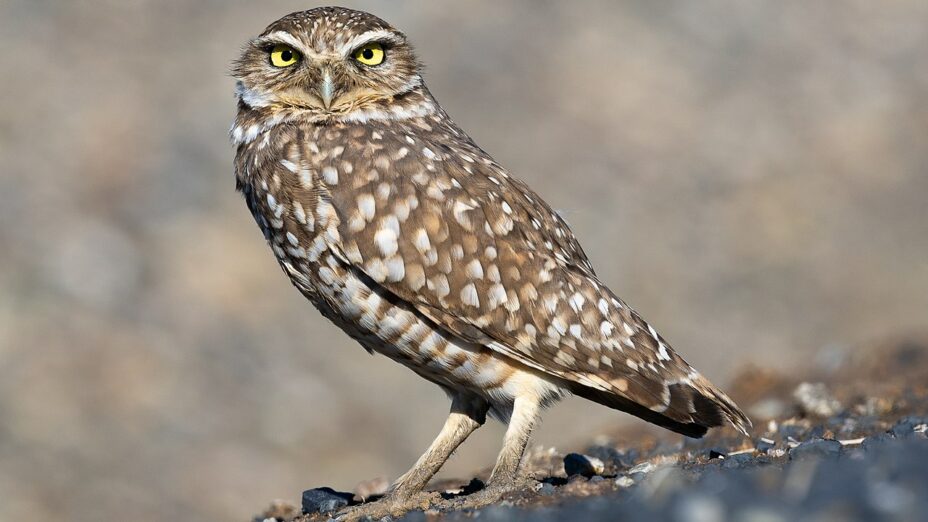
Western burrowing owl. Photo by Frank Schulenburg | CC BY-SA
Many past threats have endured for this species.
Petition author and senior conservation advocate Jeff Miller of the Center for Biological Diversity explains: “These fascinating ground-dwelling owls need relief from their homes being bulldozed for irresponsible development.”
“I’ve witnessed the disappearance of burrowing owls from much of California over the past two decades, and it pains me to watch their extinction trajectory. They need immediate protections if we want to keep these owls around to grace our grasslands and open spaces.”
This belief is well-aligned with the mission of Save Mount Diablo.
In the eastern Contra Costa County City of Antioch, community members advocated to protect the birds back in the mid-2000s. Without the protections conservation groups are now advocating for, the birds were still handed an eviction notice.
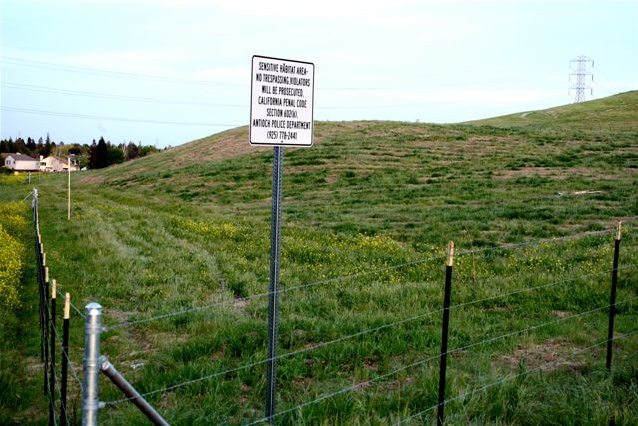
Antioch’s Burrowing Owl Habitat Preserve. Photo courtesy City of Antioch
Today, the City of Antioch maintains a site to protect a small population of western burrowing owls.
The 24-acre Burrowing Owl Habitat Preserve is fully protected from the withdrawal and reallocation for other city uses with management funded through an endowment established by the City of Antioch.
With more protection, these birds and their grassland habitats may be able to receive more mitigation lands and preserves.
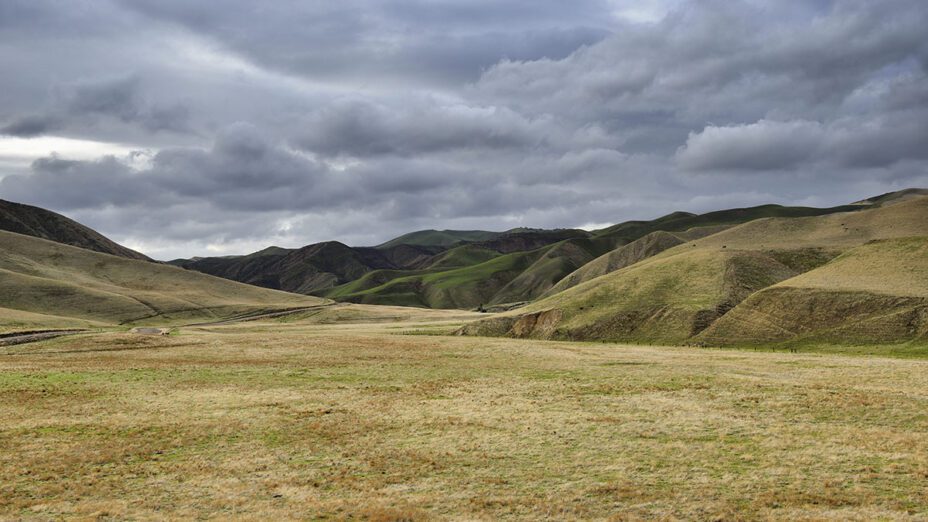
Del Puerto Canyon grasslands. Photo by Al Johnson
Burrowing owls do face other threats, including
- Agricultural practices such as disking and tilling can crush owls in their burrows
- Predation by both native and introduced predators, including feral cats and dogs
- Collisions with vehicles given the owls’ low, ground-level flight
- Wind turbines (if the wind turbines are carefully sited or relocated, the mortality caused by wind turbines could be greatly reduced)
- Shooting, vandalism, and collisions with aircraft
Additionally, rodent control measures that poison or eliminate ground squirrels indirectly affect owls by destroying their burrows. Climate change, leading to extended droughts and extreme weather events, further exacerbates these challenges.
Save Mount Diablo’s Work
Save Mount Diablo is highly supportive of additional protections for western burrowing owls.
We continue to monitor developments and advocate for responsible land use and habitat protection.
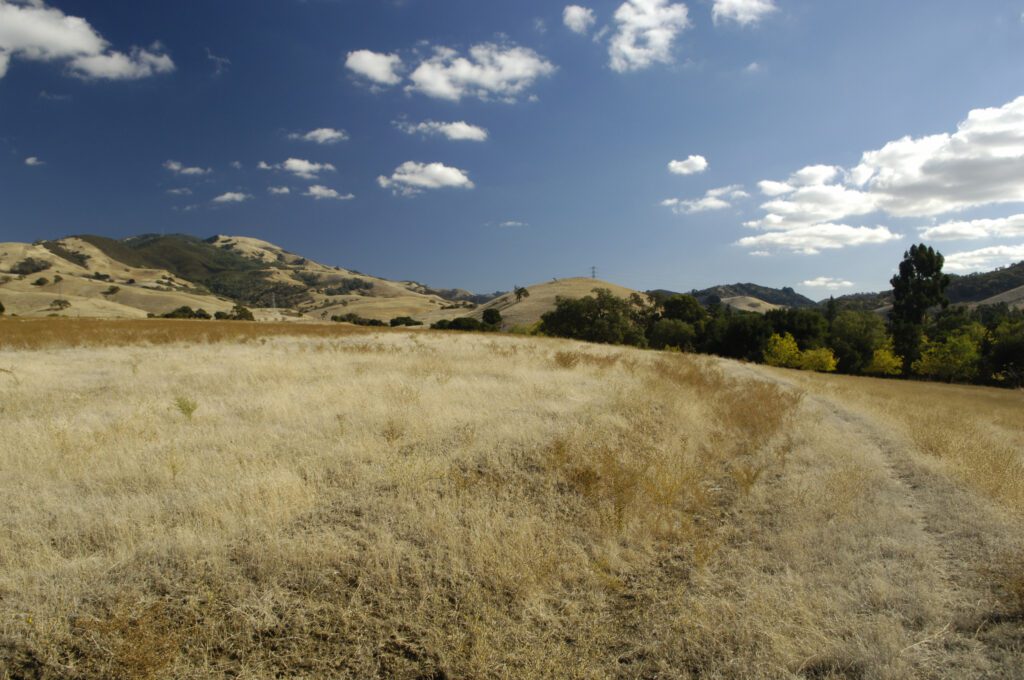
Grassland along North Gate Road. Photo by Scott Hein
Continued and new support of the organization will maintain and expand our ability to keep these ecosystems protected from multiple threats.
Our expanded work area now covers the whole of the Diablo Range, which contains native grasslands that are home to all sorts of amazing flora and fauna.
Our advocacy and land use work is a top priority for Save Mount Diablo.
By supporting enhanced protections for the western burrowing owl, conservationists can ensure that these charming birds continue to grace our grasslands and contribute to the health of our ecosystems. Together, we can make a difference.
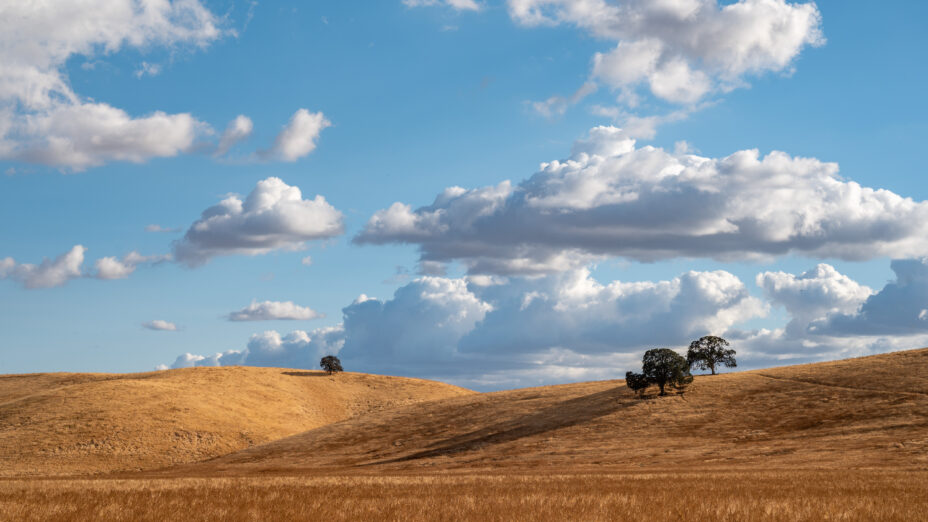
Hills of Antioch near Sand Creek. Photo by Alexander Broom

